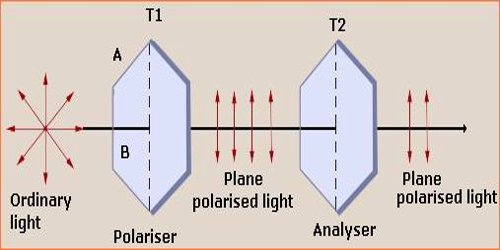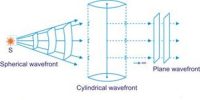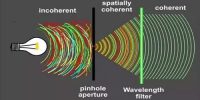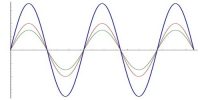Tourmaline Crystal Experiment and Polarization of Light
Polarization is the action of restricting the vibrations of a transverse wave, especially light, wholly or partially to one direction. Light may be polarized partly or entirely. Light is polarized when it is reflected from a transparent material, such as glass. The degree of polarization depends on the material and on the angle at which the light is reflected.
Let S be a source of light. Waves of light emitted from the source S will vibrate with equal amplitude on the planes normal to their path of transmission. A is a tourmaline crystal which has been placed on the path of the waves of light. Light waves from the source S will be incident on any one of its plane surface [Fig. (a)].
If viewed from the other side of the crystal, the light of the same intensity will be seen. Light emitted from the crystal will depend on the nature of the crystal and will appear slightly colored. In this condition, if the crystal is rotated with respect to the point O, the light of the same intensity will be seen. Now parallel to the crystal A and on the path of light another tourmaline crystal B is placed in such a way as its optic axis remains normal to the path of light [Fig. (B)]. In this situation, if viewed from the other side of the crystal B, the light of the same intensity will be visible.
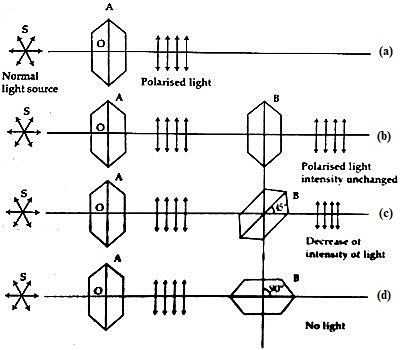
Fig: Tourmaline Crystal Experiment
Now, keeping the crystal A fixed if the crystal B is rotated slowly along the point O, then it will be seen that light emitting from the crystal B is slowly diminishing [Fig. 7.14(c)]. When the crystal B is placed at right angle to the crystal A. then no light will pass through the crystal B (Fig. 714(d)]. If B is rotated more than 90°, then again light will start emitting and its intensity will gradually increase. Again, when the optic axis of B will be parallel to the optic axis of A, then the intensity of light will be maximum i.e., the intensity will return to its previous stage.
From this experiment, it is proved, beyond doubt, that light wave is not a longitudinal wave, but a transverse wave, since light waves emitted from the crystal A is vibrating in one particular plane. For this reason light emitting from A is called polarized light.
Light waves emitting from S are vibrating all around. From S to A this condition of light waves will continue. So light between the spaces S to A is unpolarized. But light waves from A to B have been brought along a particular plane. Hence, light in this space is polarized. When the optic axes of A and B are parallel to each other, then light beyond the portion B is polarized. Here A is called a polarizer and B is called an analyzer. In 1690, Huygens discovered the polarization of light.
